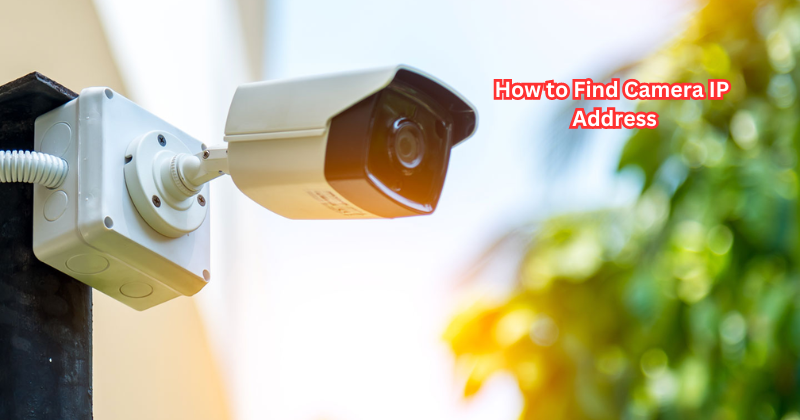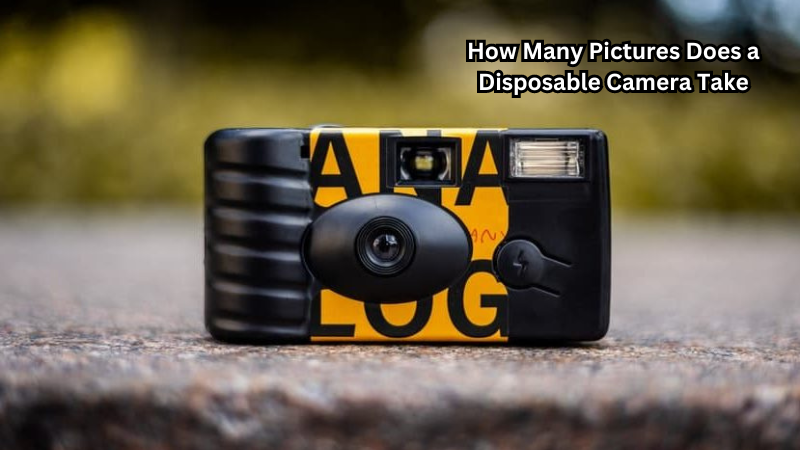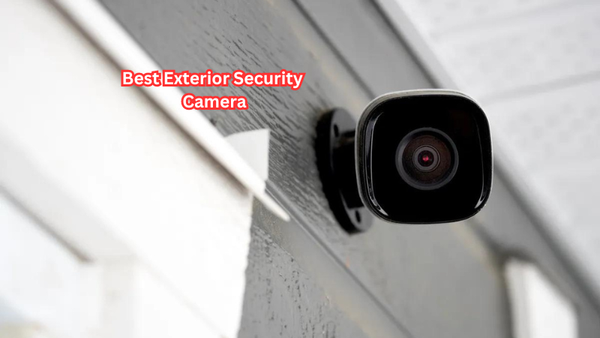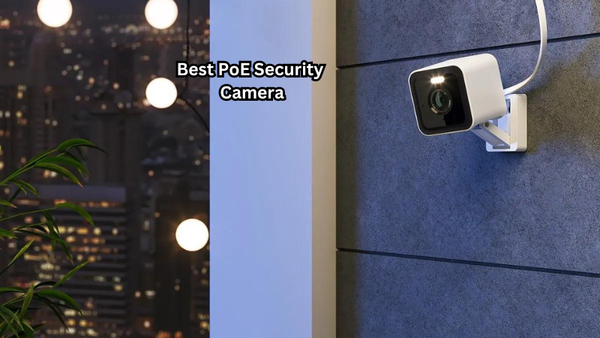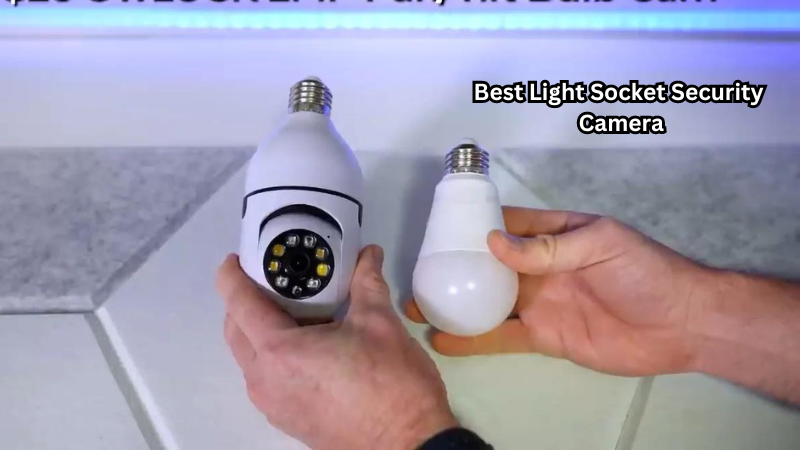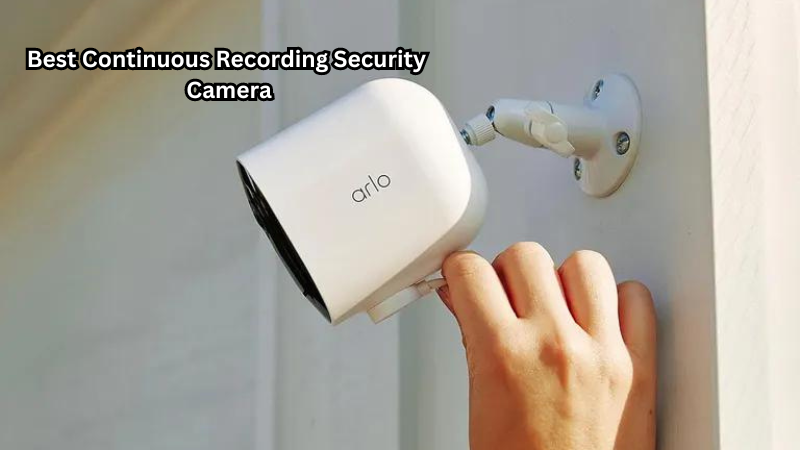In the realm of networking and surveillance systems, understanding how to locate the IP address of a camera is pivotal for seamless connectivity and management. The IP address serves as the digital identifier for the camera on the network, enabling remote access, configuration, and monitoring.
By pinpointing the camera's unique IP address, users can streamline troubleshooting, enhance security protocols, and optimize performance. Whether for home security setups, commercial surveillance networks, or smart device integration, grasping the process of finding a camera's IP address is fundamental.
This guide delves into insightful methods and tools to simplify the task, ensuring efficient camera management and network administration.
Why Finding Camera IP Address is Essential
In the world of cameras, whether wired or wireless, security or smart home devices, they all have one thing in common - an IP address. This crucial piece of information acts as the camera's digital identity on the network and allows for seamless communication between devices. Here are some reasons why finding a camera's IP address is essential:
- Remote access and management: With the IP address, users can remotely access and manage their cameras from anywhere in the world as long as they have an internet connection.
- Troubleshooting: In case of connectivity issues or errors, knowing the camera's IP address can help troubleshoot and resolve the problem quickly.
- Network security: By locating a camera's IP address, users can ensure that only authorized devices have access to the camera, enhancing network security and privacy.
- Optimizing performance: Understanding a camera's IP address can also help optimize its performance by allowing for proper configuration and management.
For IP cameras, finding the IP address is relatively straightforward as they are designed to connect to a network. However, for analog cameras that require a DVR or NVR for network access, the process may vary. You may connect the camera with a router or an NVR (network video recorder), both of which are DHCP-enabled and capable of assigning unique IP camera addresses to the camera automatically.
How to Find IP Camera Address: 4 Easy Ways
Now that we understand the importance of a camera's IP address let's explore different methods to find it. Depending on the type of camera and network setup, here are four easy ways to determine a camera's IP address:
Security Camera Companion Software:
The most straightforward method for discovering the IP camera address is by accessing the Network page within the CCTV camera software (whether on a mobile app or PC client). This section provides comprehensive IP address details for your camera.
Here is how to locate the IP address using the iVMS-4200 software for Hikvision cameras:
- Open the iVMS-4200 software and log in.
- On the homepage, click on Device Management > Camera Settings > Remote Configuration.
- Select your camera from the list, and its IP address will be displayed under Basic Settings.
If IP cameras connected to the network are not visible, use the SADP (Search Active Device Protocol) tool to scan for all devices on the network and find their IP addresses.
Router Configuration Page:
Another easy way to find a camera's IP address is through the router's web interface. Most routers allow users to view and manage all connected devices, including cameras, via the network settings page.
To locate a camera's IP address using your router configuration page:
- Connect your computer or mobile device to the same network as the camera.
- Log in to your router's web interface. (Refer to your router's manual for instructions on how to access this page.)
- Navigate to the DHCP Client List or Attached Devices section, where all connected devices and their IP addresses are listed.
- Look for the name or MAC address of your camera, and its corresponding IP address will be displayed.
Using a Network Scanning Tool:
For more advanced users, using a network scanning tool such as Angry IP Scanner or Advanced IP Scanner can also help locate the camera's IP address. These tools scan the entire network and provide details of all connected devices, including cameras.
To find an IP camera address using a network scanning tool:
- Download and install a network scanning tool of your choice.
- Ensure that your computer or mobile device is connected to the same network as the camera.
- Open the network scanning tool and let it scan all devices on the network.
- Look for your camera's name, MAC address, or manufacturer in the results, and its IP address will be displayed.
Checking By Online IP Address Finder:
If the above methods do not work, or if you are unable to access your camera's software or router configuration page, you can try using an online IP address finder tool. These tools require users to enter the camera MAC address or hostname, and they will provide the corresponding IP address.
To use an online IP address finder tool:
- Find your camera's MAC address or hostname. (Refer to your camera's manual for instructions on how to find this information.)
- Open an online IP address finder tool in your web browser, such as WhatIsMyIP.com or Find-IP.org.
- Enter the MAC address or hostname of your camera and click Search.
- The corresponding IP address will be displayed.
These are just a few of the many methods available for finding a camera's IP address. By using any of these techniques, users can easily locate their camera's IP address and optimize their network setup for efficient management and performance. All the IP addresses provided by these methods can also be used for remote access and configuration, making it a crucial step in setting up any camera-based system.
How to Get Web Remote Access with Camera IP Address
Now that you have found your camera's IP address, you can use it to gain web remote access to your camera. This allows for viewing and managing the camera via a web browser from any location as long as there is an internet connection.
To get web remote access with a camera's IP address:
- Make sure your camera is connected to the network and has a valid IP address.
- Open a web browser on your computer or mobile device.
- Enter the camera's IP address in the URL bar and press Enter.
- If prompted, enter your login credentials (username and password) for the camera's software or firmware.
- You should now have access to the camera's live feed and management features via the web browser.
It is essential to note that enabling web remote access may require some configuration and port forwarding on the router's settings page. Refer to your camera's manual or contact the manufacturer for specific instructions on how to set up web remote access with the IP address.
How to Set up Remote Viewing via 3rd Party App
Aside from web remote access, some cameras also offer the option of using a third-party app for remote viewing and management. These apps are available on both iOS and Android devices and provide convenience and flexibility in managing cameras.
To set up remote viewing via a 3rd party app:
- Download the appropriate app for your camera's brand from the App Store or Google Play Store.
- Make sure your camera is connected to the network and has a valid IP address.
- Open the app and follow the on-screen instructions to add your camera using its IP address.
- Once added, you should be able to view and manage your camera remotely through the app.
Similar to web remote access, setting up remote viewing via a 3rd party app may require some configuration on the router's settings page. Refer to your camera's manual or contact the manufacturer for specific instructions on how to set up remote viewing with the IP address.
Tips for Managing Your Camera's IP Address
Here are some tips for effectively managing your camera's IP address:
- Assign a static IP address to your camera to ensure it does not change frequently. This will prevent any interruptions in connectivity or access.
- Regularly check and update the firmware of your camera to maintain security and performance.
- Keep track of all connected devices' IP addresses, including cameras, for easy troubleshooting and management.
- Consider using a network monitoring tool to monitor the activity and performance of your camera, ensuring optimal functioning.
These tips can help ensure that your camera's IP address remains stable and accessible for efficient management and usage. Default IP address and credentials may vary for different camera brands, so it is essential to refer to the manual or contact the manufacturer for specific details.
FAQs
How can I find my camera's IP address on a local network?
To find your camera's IP address on a local network, you can usually access your router's admin panel. From there, look for the list of connected devices which should display your camera along with its assigned IP address.
Can a cell phone detect a hidden camera?
No, a cell phone cannot detect a hidden camera as it does not have the necessary hardware or software. However, you can use your phone's camera and flashlight to check for any unusual reflections or LED lights that may indicate a hidden camera. Both camera and flashlight can also be used to detect infrared signals emitted by some hidden cameras.
What is the default address for locating a camera's IP address?
The default address for locating a camera's IP address varies for different brands and models. It is best to refer to the manual or contact the manufacturer for specific details. However, some common addresses include 192.168.0.1, 192.168.1.1, or 10.0.0.1.
How to detect spy cameras in hotels?
To detect a spy camera in a hotel, you can use your phone's flashlight to check for reflections or LED lights. You can also perform a network scan to identify any unauthorized devices connected to the network.
Conclusion
In conclusion, discovering your camera's IP address within a local network is a fundamental task for efficient monitoring and management.
By leveraging various methods, such as accessing the router's admin panel, utilizing default addresses to access camera settings, or employing software tools for network scanning, users can successfully locate the IP address of their camera.
Accurate knowledge of the camera's IP address is paramount for seamless connectivity and control, ensuring smooth operation and optimal security within your network infrastructure. Stay informed, explore diverse avenues, and empower yourself to navigate the digital landscape with confidence and precision.
